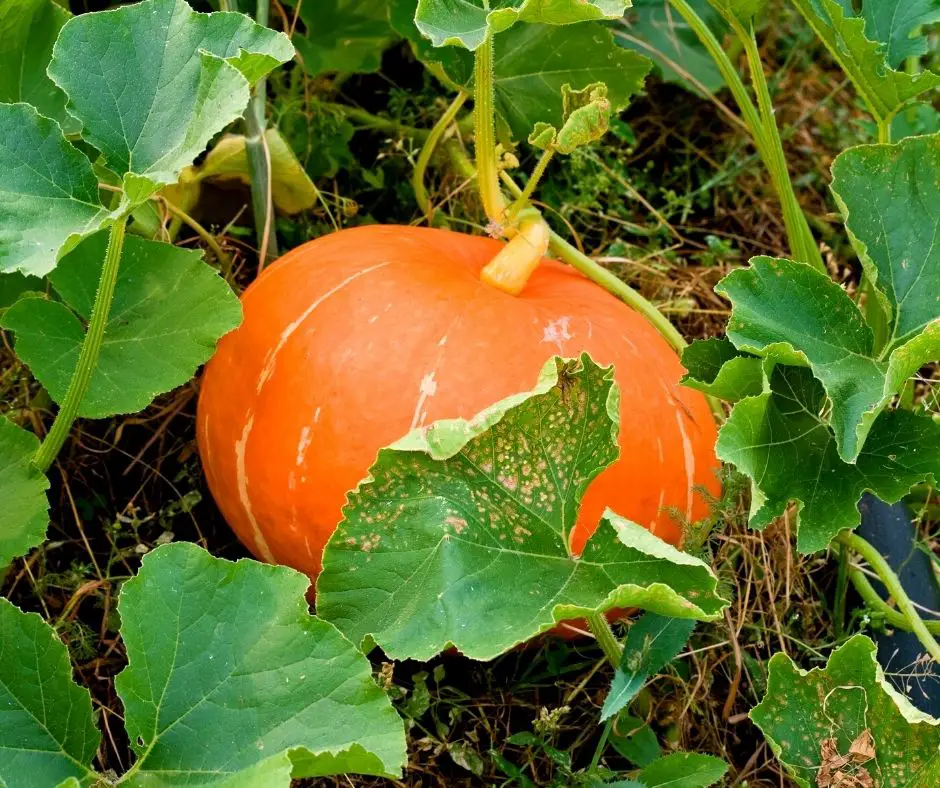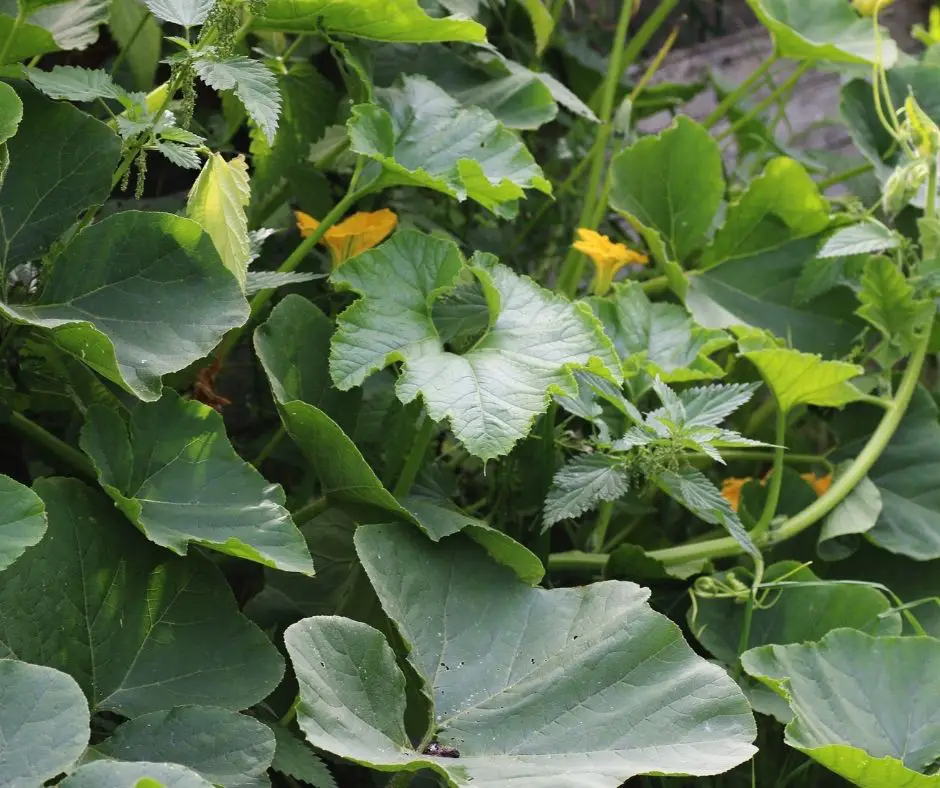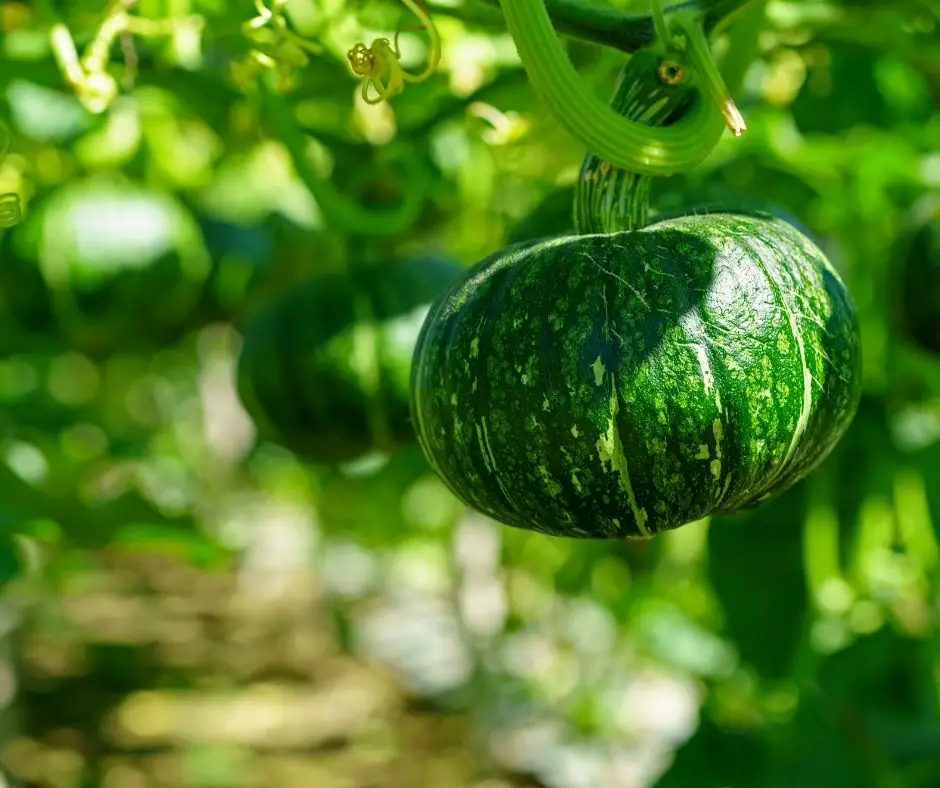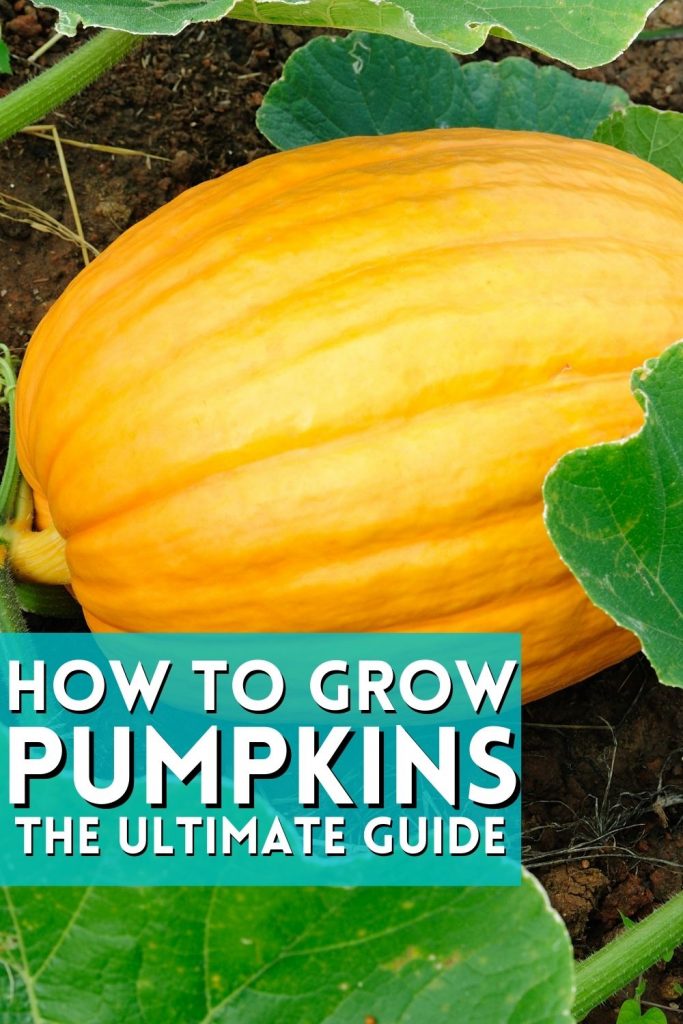How To Grow Pumpkins: The Ultimate Guide
It’s that time of year again! The leaves are changing, the air is crisp and it’s pumpkin season. If you’re looking for a fun fall activity to do with your kids or just want to grow something new this year, pumpkins might be what you need. In this blog post, we’ll show how to grow pumpkins from seed all the way through harvest time. We’ll go over: how to start seeds indoors, when to plant them outdoors, how much sun they need and more!
Are pumpkins easy to grow?

Yes, Pumpkins are easy to grow. They need a lot of sun, and will do best in loose well-drained soil that is slightly acidic but not too much so (pH levels around five).
Pumpkins are also heavy feeders, which means they like lots of water and manure/compost. Luckily it’s easy for you as the gardener to ensure that your pumpkins get the nutrients they need to grow.
The first step in how to start seeds indoors is picking out a good seed type for you and then deciding where you want them planted. Some people like growing pumpkin as part of their garden, which can include specific sections or beds just for these big plants, while others dedicate entire garden spaces to pumpkins.
In general, pumpkins need to be planted in rows at least six feet apart because they can grow up to 20 or more feet long and twelve feet wide. However, the larger your pumpkin patch is growing the better it will do since you’ll have a higher yield!
How many pumpkins will one plant produce?
Each pumpkin plant will produce, on average, between 3-10 pumpkins depending on the pumpkin variety. The larger pumpkin varieties may only produce 3-6 pumpkins where as the smaller varieties such as the pie pumpkins will produce between 8-12. This will also depend on the care throughout the season.
How to Grow Pumpkins From Seed
You must first decide what variety of pumpkin you want to grow. There are a few factors that go into this decision: the climate of your area, how much space you have and how long it takes for pumpkins to start producing fruit.
If growing in containers or raised beds, choose compact varieties such as Baby Bear™ which produce well even when grown on limited space. This will make a smaller pumpkin but it will be easier to manage.
If growing in the ground, choose larger varieties such as Big Max™ which produce pumpkins that require more space and time before they can start producing fruit.
Varieties we recommend:
| Our Choice | Taste | Production | Space Saving | Uniqueness |
| Sugar Pie |  |  | ||
| Jarradale Pumpkin |  |  |  | |
| Rouge Vif d’Étampes |  |  | ||
| Big Max Pumpkin |  |  |
Once you have chosen your variety of pumpkin you will need the following:
- Good Quality Potting Soil (No miracles needed)
- Your Seeds
- Containers or Pots
- Organic Fertilizer (Optional)
How to Germinate Pumpkin Seeds
Start by pre-moistening your potting mix. This will help you be able to evenly water your pots once your seeds are planted.
Fill your pots or containers with pre-moistening potting mix and lightly pack the soil down.
Plant 2 seeds in each pot about 1/2-3/4 inch deep and cover with soil. You always want to plant multiple seeds so that you aren’t waiting for one seed to sprout that may not. This just helps your chances.
Water your new pots and place your pots onto a heat mat to aid in germination. Your seeds should sprout in 5-10 days at most.
Taking Care of Pumpkin Seedlings
Once your seeds sprout, make sure to give them plenty of light by placing them underneath some grow lights. Your plants will need to be under the grow light until they are ready to be hardened off outside.
Pumpkins and other members of the cucurbits family grow exceptionally fast and will outgrow a small container within a few days.
Make sure to water them weekly or anytime the soil is about to dry out. You can do this by checking the weight of the pot where your seeds are.
If the pot has lost about 25% of its weight in water then it’s time to water them.
Now, your plants are ready for their big move outdoors! If you have a pumpkin patch outside that is protected from wind and rain, this will be an ideal spot for your pumpkins to grow up until they’re mature enough to harvest.
What month do you plant pumpkins?
Pumpkins should be planted between April and June. This will give you enough time for your pumpkin plant to grow and produce pumpkins as well as enough time for the pumpkins to ripen. It depends on the variety because most pumpkins take between 80-105 days to produce.
Do pumpkins like sun or shade?
Pumpkins prefer full sun. They need full sun to grow and thrive. Make sure to plant them in an area that gets at least 6 hours of sun a day and has plenty of space for them.
How much space does a pumpkin plant need?

Pumpkins need a lot of space to grow. You need a minimum of 100 square feet for each pumpkin plant. You should plan on having a garden bully because pumpkin plants are large and they can take over an entire garden if left unchecked.
When you’re out searching for the perfect pumpkin, there are a lot of factors to think about. I recommend looking for vines that have room to ramble and plan on planting them near the edge of your raised bed or garden so they’ll grow up along it instead of growing across your whole space making everything very crowded.
Once these plants start flowering and setting fruit, don’t try directing their growth as this will inhibit its ability to produce pumpkins!
Pumpkins come from long vines some extending 20 feet in length if not more which is why when choosing where you want them planted make sure there’s ample area around each vine with enough elbowroom because once they get going those things can spread like wildfire!
One way to save space when planting pumpkins is by using smaller varieties. Growing them vertically on a trellis offers a great option for those with limited garden spaces as it has plenty of room for your pumpkin plants.
Do Pumpkins have deep roots?
Pumpkins have roots that stay fairly close to the surface. Pumpkin roots will grow straight down and dig deep into moist soil, but they won’t go much below 12 inches deep.
If you’re growing pumpkin in containers, it’s better that pumpkins have a depth of at least 18-24 inches for the best yields.
How deep should the soil be for pumpkins?
The soil for pumpkin plant should be at least 12 inches deep but 18-24 inches deep would be optimal. Pumpkin roots can go as deep as 12″ or so inches in search for nutrients.
How do you prepare the soil for pumpkins?
The soil should be prepared well before planting the pumpkin plant. You should add a good quality compost or well aged manure to improve the quality of your garden’s topsoil, and break it up with a shovel for better aeration. In the end the soil should be loose, well draining and packed with nutrients.
If you are growing in containers you should make sure to add compost, some well aged manure or organic fertilizer to the pot before planting.
You and even reuse last years container mix by following the information in my article about rejuvenating potting mix.
How to Plant Pumpkins
Start with digging a hole about 12 inches deep by 12 inches wide. At the bottom of this hole, place a layer of aged manure or compost; about two to four inches should do the trick.
Place the soil back into the hole and add more until you’ve got a mound formed, about the size of a baseball base.
The purpose of mounding the soil is to increase drainage, and to provide a base of rich organic matter for your plants.
By prepping this mound six months to a year before you plant, you’ll be ready to plop those seeds in and get right to growing when planting season arrives.
Transplant your seedlings into the garden a week or two after the last spring frost. You can warm up your soil by covering it with clear plastic to make sure that you get better results than if you used traditional black plastics.
What can I plant with pumpkins?
- Corn
- Lavender
- Marigolds
- Marjoram
- Nasturtiums
- Pole Beans
- Sunflowers
How often to water Pumpkin Plants
When the flowers and fruits are forming, plants need plenty of water. The best way to do this is with a drip system or soaker hose that directly waters soil at the base of vines. This will avoid wetting foliage while still providing enough moisture for roots down below.
Try watering in the early morning when any splash onto leaves can dry quickly; otherwise they may be more prone to fungus like powdery mildew which slowly kill all leaves on your vine if it’s not attended too soon!
Most vines will wilt during the hot afternoon weather and it might concern you. However, this is normal. Pumpkins will actually wilt during the hottest part of the day as a way to conserve moisture. The vines will usually perk right back up when the temperature levels out.
What is the best fertilizer for pumpkins?
The best fertilizer for pumpkins is compost. This will provide all the nutrients needed to help them grow big and healthy. Just give your plant a good dose of a high quality compost or worm castings when you plant to get it started.
How often should I fertilize Pumpkins
You should fertilize your pumpkins every 3-4 weeks. Just side dress with some compost or worm castings. You can also supplement this with watering with worm tea or compost tea every week or so.
Pumpkin Flowers and Fruit Production
Different pumpkin vines will start to blossom at different times. The first few flowers that open on the vine are male blooms and their pollen attracts bees in order for them when the female blossoms begin opening, they’re ready with a steady supply of food.
Male plants only live for one day before dropping from the plant so if your plant is under stress then it may have more males than females or cause all other plants nearby to also be stressed because of cross-pollination (male flower pollen spreading).
If you notice any bugs eating away at your pumpkin’s leaves check around its stem near where there might be some damp soil as this can attract beetles like cucumber beetles which carry bacterial wilt disease onto these pumpkins that eventually causes them to
Common Pumpkin Pests
When it comes to pests, cucumber beetles are the most common. Despite their name, cucumber beetles love pumpkin foliage and small seedlings cannot survive an attack so they should be protected at transplant time.
To prevent this from happening again she covers them with garden fabric when planting and leaves in place until plants start flowering – about three to four weeks later; then for pollinators have access to blossoms it needs removing for season as well!
Squash vine borers can also be a problem. Learn to watch for the telltale “frass” that indicates the presence of an invader or borer. If they attack, you can use your box cutter and extract them quite easily!
Are pumpkins green at first?

Yes, new pumpkin fruits are green when they begin to grow. It is only after substantial time that they develop and ripen to orange.
Just like most other fruits and vegetables, pumpkins start out as a flower that needs to be pollinated. The flower forms and in a perfect world just pollinated by a bee or another insect.
Once pollinated, the little pumpkin starts to grow into what we all know and love.
Over the course of a few months the little fruit can grow to a large fruit that can range from just a few pounds to hundreds of pounds depending on the variety of course.
What to put under growing pumpkins?
Place a piece of wood or cardboard underneath growing pumpkins. This gives the pumpkins something to protect them from the soggy soil which will help prevent rot. Water at the base of the pumpkin plant rather than watering over the entire patch.
How to Prune your Pumpkin Vines
Some gardeners promote branching to get more pumpkins by pinching the tips out of main vines when they reach about 2 feet long.
You can also increase the yield on a vine by removing all female flowers (these have a small swelling at the base of their bloom) for the first 3 weeks, and these practices may produce sturdier vines that will be able to set larger fruit if you provide them with good soil, sun, and moisture.
If your goal is fewer but larger pumpkins per plant make sure not to leave any remaining male or female blossoms after blooming has occurred as this could stunt growth in order for it’s energy reserves go into producing only one pumpkin instead of multiple smaller ones
How do I know when pumpkins are ready to pick?
There are a few ways to tell when pumpkins are ready to be picked. One way is by the color of the stem below where they grew on the vine, which will turn from green to tan as it matures; another potential indicator is if there’s a crack in its shell or skin that means their seeds have dried and lost water.
Another way to tell when it is time to harvest pumpkins is to examine the pumpkins themselves. Pumpkins are ready to harvest when they have turned a deep shade of orange and their rinds feel hard yet slightly soft if squeezed.
Harvesting Your Pumpkins
Harvesting pumpkins and winter squash in the fall is a great way to save some for eating during what would otherwise be an unfruitful time of year.
You know it’s time to harvest pumpkins when the outside is fully colored, skin hard and stem begins to shrivel. Make sure you wear gloves when harvesting as vines are often prickly! To cut down a pumpkin, make sure your knife is sharp before cutting off its stems with at least an inch of remnant left behind (more would be better).
Always lift by slipping your hand under the bottom of fruit instead of using their stem. If they break in half then there will be no more storage space available for them later on
Before being stored away, they should first be cured by leaving them out on top or hanging from the ceiling with just enough ventilation so that air can get through, but not too much where it will dry everything up!
The best part about this curing process is how you’ll have delicious, healthy treats ready for Thanksgiving dinner when your guests arrive – without having to go shopping at all!
What happens if you pick a pumpkin too early?
If you pick pumpkins or winter squash before they’re ready, the fruit will be a pale green color and too hard to eat. It’s best to leave them on the vine until their rinds are deep orange in color with some darker spots across it – indicating that they’ve been sufficiently ripened by the sun enough for harvest.
Can you leave pumpkins onthe vine too long?
If you leave a pumpkin on the vine too long, the fruit will have started to rot and will be inedible. At this point the pumpkins will be good for decoration only and should be discarded as soon as the holidays are over.
Storing Your Pumpkins
Before storing pumpkins, make sure to cure them by setting them out into the sun for about 10 to 14 days to harden the skin of the pumpkin, seal the cut on the stem, and sweeten the flavor or the pumpkins.
Warm dry weather is best for curing since it helps improve flavor while protecting against frosty nights using blankets or moving them inside to an area with less exposure.
Once cured you can store your pumpkin in places that are between 50-60 degrees Fahrenheit but ideally 60% humidity (which most homes lack). You will need to do what works best for you such as storing them in basements, crawl spaces or other freezable areas so they don’t touch each other. A cellar or garage are not always recommended because it is too humid which will cause the pumpkin and winter squash to rot quickly.
If you like this article about how to grow pumpkins, please share it on social media and with friends. For all the latest recipes, container gardening tips and growing guides subscribe to our newsletter in sidebar.
Also, check out our article on What are the best herbs to grow? or How to prepare your herb bed for winter!
Be sure to Like us on Facebook and Follow us on Instagram, Twitter, and Pinterest!






